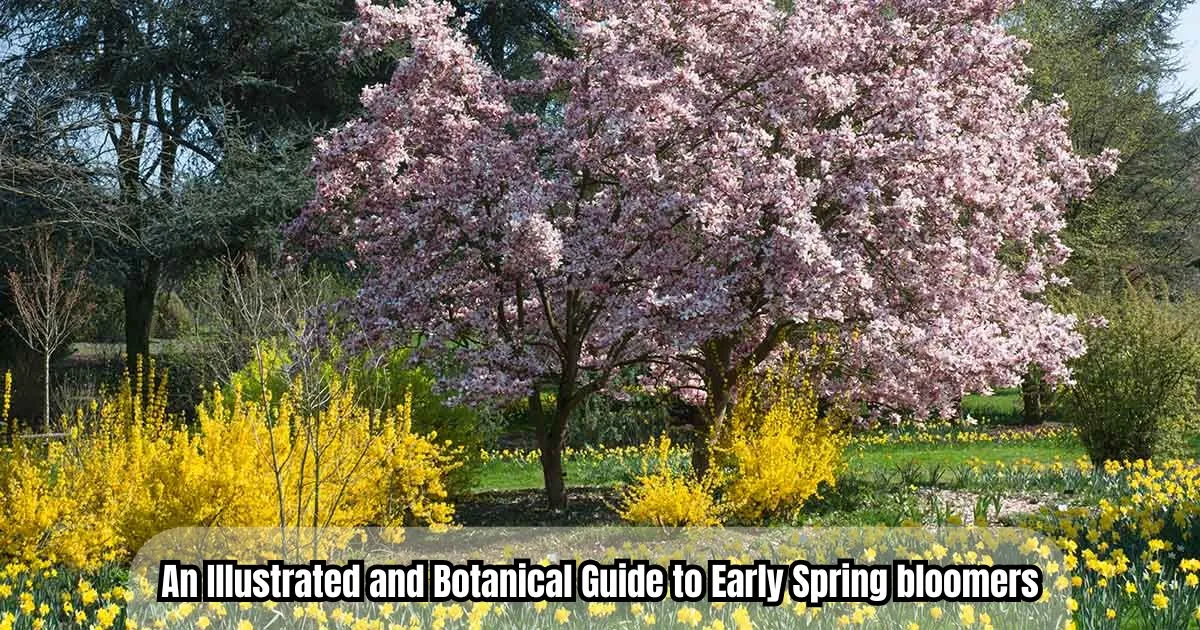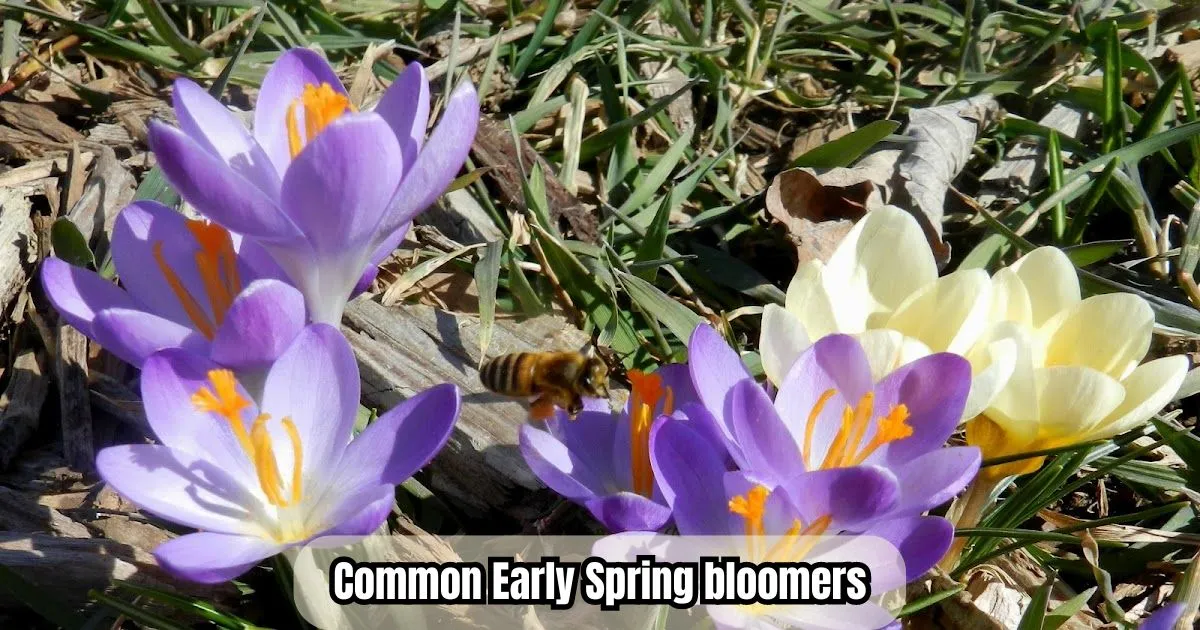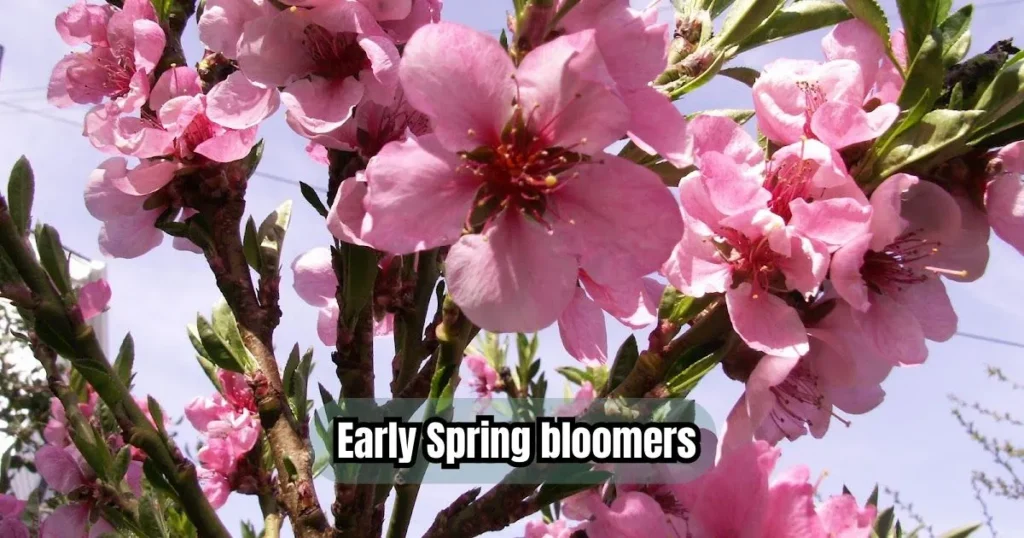Early Spring bloomers are the first plants to awaken after winter, adding vibrant colour to gardens when most other plants are still dormant.
These hardy flowers thrive in cool temperatures and often emerge through melting snow, signalising the start of a new season.
Popular early bloomers include crocuses, daffodils, tulips, and snowdrops, bringing life and beauty to outdoor spaces just as winter begins to fade. Ideal for gardeners seeking an early burst of colour, these flowers are perfect for creating a cheerful spring display.
Which vibrant flowers are Early Spring bloomers and brighten your garden as winter melts away?
Crocuses, snowdrops, and daffodils are popular Early Spring bloomers, thriving in cool temperatures and adding vibrant colour to gardens as winter fades.
They emerge quickly, often through the last patches of snow, providing a cheerful start to the growing season before most other plants begin to sprout.
An Illustrated and Botanical Guide to Early Spring bloomers

Crocus (Crocus sativa)
These cup-fashioned beauties, regularly a colourful crimson or yellow, are many of the first actual signs and symptoms of spring.
Standing at only a few inches tall, they boast delicate petals surrounding a valuable cluster of stamens.
Look for NYT clues referencing “saffron,” a spice derived from the dried stigmas of Crocus sativa.
Read also: Is Pura secure for Pets? A complete guide
Crossword Clue Examples
Tiny springtime flower (4 letters) – Crocus
Source of saffron spice (five letters) – Crocus
Pro Tip: The botanical call “Crocus” itself may be a useful trace! It indicates a small flower, which aligns flawlessly with the physical characteristics of this early bloomer.
Snowdrop (Gallants valises)
Aptly named, the snowdrop pushes via wintry weather’s kick back with its fashionable, drooping white bells. These sensitive blooms boast extraordinarily inexperienced markings on their inner petals (petal-like systems). NYT clues may mention “drooping” or “iciness warrior” while referencing snowdrops.
Crossword Clue Examples
Drooping white flower that blooms in wintry weather (7 letters) – Snowdrop
Early spring flower that defies the bloodless (eight letters) – Snowdrop
Pro Tip: The botanical name “Gallants” offers a clue approximately the flower’s colour. “Gala” can be related to milk or white, hinting at the snowdrop’s pristine hue.
Daffodil (Narcissus spp)
These joyful trumpet-shaped blooms come in loads of colours, maximum generally yellow. Standing taller than their early spring opposite numbers, daffodils boast a relevant corona (trumpet) surrounded by using petals. NYT clues may use phrases like “trumpet” or “yellow satisfaction” to describe daffodils.
Crossword Clue Examples
Spring flower with a crucial trumpet (7 letters) – Daffodil
Yellow springtime delight (7 letters) – Daffodil
Pro Tip
The botanical name “Narcissus” can be a double-edged sword. While it doesn’t without delay hint at physical traits, spotting it could help differentiate daffodils from other spring bulbs like tulips.
This guide is just the start of your floral conquest! Stay tuned for similar exploration of early spring bloomers and a way to grasp the ones problematic NYT crossword clues.
Common Early Spring bloomers

Deciphering Wordplay
NYT crossword editors love an excellent play on phrases. Here’s the way to deal with them with early spring bloomers:
Double Duty
A flower call might do double responsibility inside the clue. For example, “One who crocuses” (8 letters) can be referring to someone who bends over or crouches, but “crocus” is likewise a flower. Consider each meaning to locate the answer.
Hidden Blooms
Flower names are probably hidden inside apparently unrelated words. The clue “Sun’s first kiss” (6 letters) is probably hinting at “snowdrop,” as those vegetation often bloom with the first signs of spring sunshine.
Letter Play & Anagram Adventures
Sometimes, the flower call itself is scrambled inside the clue.
Anagram Alerts
Be looking for clues that trace at rearranged letters. Phrases like “flower in disarray” (7 letters) can be an anagram for “daffodil.”
Unscrambling Techniques
Pay near attention to the wide variety of letters in the answer. If the clue mentions “messy spring bloom” (5 letters), strive rearranging the letters of not unusual early spring flora to locate the answer (e.G., “crocus”).
Double Meanings & Punny Puzzles
NYT crossword editors have a keenness for puns. Here’s a way to navigate them:
Homophone Hijinks
A flower name may sound like some other phrase. The clue “Early sign of spring… or an area to weep?” (five letters) will be relating to a “teardrop” or a “snowdrop,” which sounds similar but refers to the flower.
Pun Power
Flower names with double meanings may be a playful project. “Daffodil daffodil, the sector’s a stage” (7 letters) is probably a pun on the flower’s call and a famous Shakespeare quote, hinting at the answer being “daffodil.”
By spotting these techniques and working
With exercise puzzles, you’ll quickly be a master at deciphering even the maximum cryptic early spring bloomer clues in NYT crosswords. Remember, the secret’s to assume creatively and recall all of the viable interpretations!
Bloom with Confidence The Final Tally
Congratulations! You’ve explored a colourful bouquet of early spring bloomers and the smart methods they seem in NYT crosswords. Remember those key takeaways:
FAQ’s
Why are Early Spring bloomers so commonplace in NYT crosswords?
Early spring bloomers are common in NYT crosswords because they bloom early in the season, making them a timely theme. Their names lend themselves to clever wordplay, puns, and anagrams, adding fun and challenge for solvers.
I’m new to NYT crosswords. What are some commonplace Early Spring bloomers I should know?
Common early spring bloomers to know include crocuses, which are cup-shaped and often yellow or purple; snowdrops, with their elegant white bells; and daffodils, cheerful trumpet-shaped flowers usually in yellow.
The clues point out flower names, but they’re scrambled or hidden! How do I remedy them?
NYT crossword clues often use wordplay! Look for anagrams, such as “flower in disarray” leading to “daffodil.” Also, consider double meanings or puns, like a clue referencing a Shakespeare quote that hints at “daffodil.”
Are there any tricks to the use of botanical names for solving crossword clues?
Yes, botanical names can aid in solving crossword clues! For instance, “Crocus” refers to a small flower, while “Gallants” hints at the snowdrop’s white colour, as “gala” suggests something milky or pure.
Where can I study greater approximately Early Spring bloomers life or crossword solving strategies?
You can explore early spring plants at the National Gardening Association website, which offers a wealth of information on various flowers and gardening tips. For crossword strategies, consider resources like crossword blogs and forums that share solving techniques.
Conclusion
After a long winter, Early Spring bloomers bring brilliant colours to gardens, making them a lovely way to celebrate the arrival of spring.
In addition to adding color to outdoor areas, flowers like daffodils and crocuses draw pollinators that emerge throughout the warmer months.
You may transform your garden into a breathtaking show that welcomes the new season and restores its beauty and vitality by choosing the correct plants and giving them the right care.

